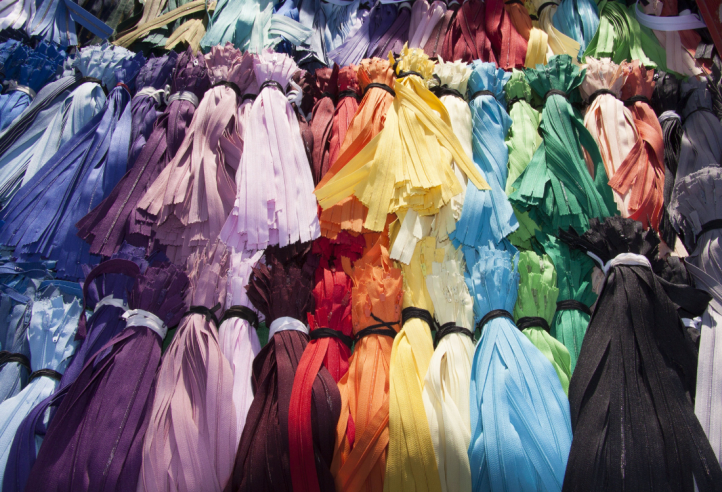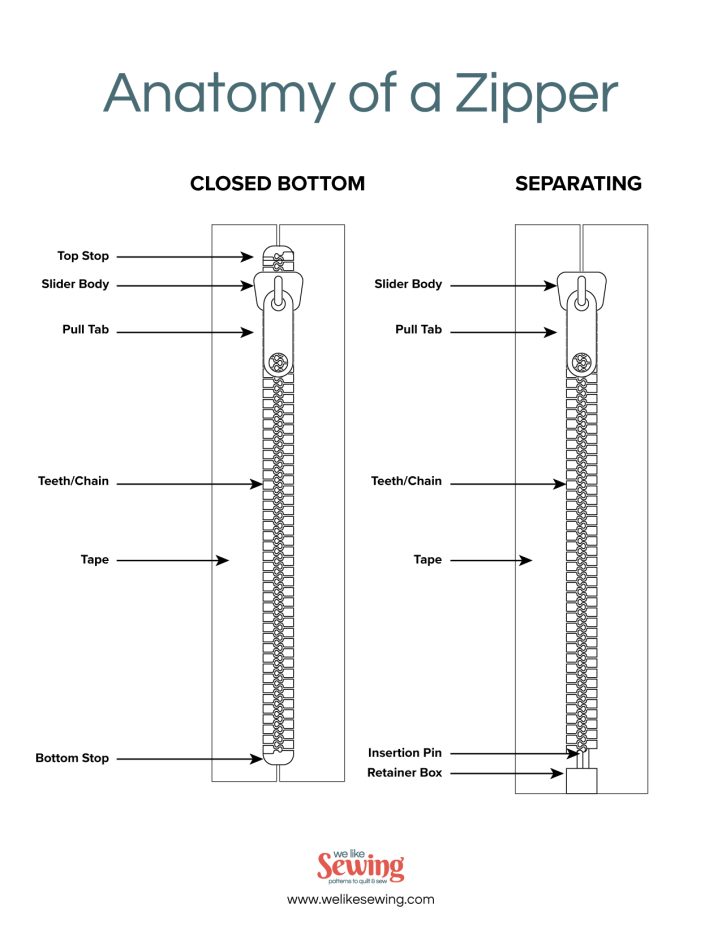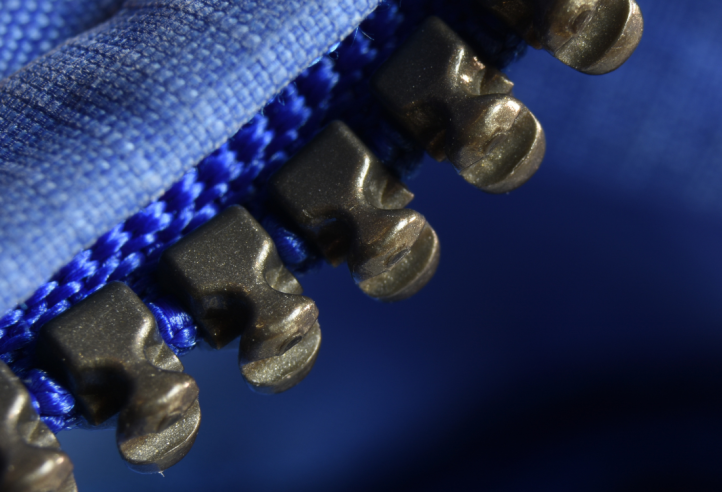
One of the first challenges that beginner sewists face is learning how to insert zippers into a garment. When you’re standing in front of the zipper display at your local fabric store, it’s easy to be overwhelmed by all of the choices: what length, what color, type of teeth, what type of zipper best fits your garment and fabric, are all questions that run through your mind. That’s why We Like Sewing is here to teach you all about zippers, so that you can pair the proper zipper to the appropriate type of clothing that you’re sewing.
While color is your personal preference and zipper length will most likely be determined by the sewing pattern materials list, choosing the correct type of zipper is a bit trickier. Our simple guide for sewing beginners will cover two main categories to consider when it comes to zipper selection: the type of zipper teeth and the functionality of the zipper. We’ve also created a handy infographic for the different parts of a zipper, so that you can keep your zipper tape straight from your zipper teeth. Join us as we break down all things zippers in our helpful beginner sewing guide.
Anatomy of a Zipper
While there is some variance among different types of zippers, most zippers feature the same parts.

- Teeth – The teeth of the zipper interlock to close the zipper.
- Tape – Zipper tape is found outside of the teeth and is fabric that the zipper is mounted on. Zipper tape is most often made of polyester.
- Slider – The slider is the mechanism used to pull the zipper teeth closed.
- Pull/ Pull Tab – The pull or pull tab is used to move the slider up and down the zipper teeth.
- Stops – Located at both ends of the zipper, the stops are responsible for holding the zipper closed. All zippers have top stops, while some zippers have bottom stops and some, like open-end (separating) zippers, have similar features such as box stops (retainer box), box pins, and insert pins.
Different Types of Zipper Teeth

In general, there are three main types of zipper teeth that beginner sewists will encounter: metal, moulded plastic, and coil. In this section, we’ll cover each type of zipper teeth, as well as what type of zipper works best with different types of garments and other sewing projects.
- Metal – Metal zippers have metal zipper teeth and are often used for sturdier garments or accessories, such as jeans or bags. These zipper teeth have less flexibility than the other types listed in this article and are more difficult to shorten. Metal zippers are made in a variety of finishes and are perfect for heavier weight fabrics.
- Moulded Plastic – Moulded plastic zippers have larger zipper teeth and are also known as VISLON zippers. These zippers have some flexibility and are often brightly colored. According to Threads Monthly in their article, “Zipper 101: Different Types of Zippers, Parts, & Sliders”, moulded plastic zippers can be difficult to sew on a curve and are often found on children’s clothing and outerwear such as jackets and coats. These zippers can often pull apart and separate while closed, which is something to keep in mind when selecting your notions.
- Coil – Coil zippers are made with nylon coils and are very flexible and feature smaller zipper teeth. These zippers are also called nylon zippers and are ideal for lightweight fabrics or garments. Coil zippers are also used in canvas tents or bags but are not recommended for projects that need a strong zipper.
- Invisible – Invisible zippers, also known as concealed zippers, have very fine teeth and are hidden in a seam, so that it appears almost invisible in comparison to the other types of zippers listed above. Invisible zippers are often found on dresses and skirts and provide garments with a professional looking finish.
Different Types of Zipper Functionality

Zippers are not only defined on the type of teeth they have, but how they function as well. From two-way zippers to waterproof zippers, it’s important to consider how your garment or sewing project will need to open, what type of strain the zipper will be under, and what zipper will pair best with the garment you’re making.
- Open-End – Open-end zippers, also referred to as separating zippers, are designed to allow a garment to be zipped all the way up. The zipper separates completely and have box pins and stops as mentioned in our anatomy section. Open-end zippers are typically used in outerwear such as coats and jackets.
- Closed-End – Unlike open-end zippers, closed-end zippers have a bottom stop instead of a box stop, meaning that they cannot be unzipped past their closed-end. You’ll typically find this type of zipper on clothing like pants or dresses, as well as accessories and some home décor items.
- Reversible – Reversible zippers can be zipped open or closed from either end and are commonly found on outerwear or outdoor/camping gear, such as sleeping bags.
- Two-Way – While you may think reversible and two-way zippers are the same at first glance, they do have some differences. Reversible zippers have a reverse slider, whereas a two-way zipper has two sliders on one zipper. Two-way zippers can be found on outerwear and luggage.
- Waterproof – The functionality of waterproof zippers is in the name. Featuring additional coverings to prevent water leakage, you’ll most likely see this type of zipper on tents and other camping gear, as well as some coats and bags.
Quick Zipper Facts for Beginner Sewists
Now that we’ve covered the different types of zippers, as well as the parts of a zipper, let’s go over a few other important facts about zippers.
- Zippers also consist of locking or non-locking sliders. Locking sliders have a pin that prevents the zipper from easily unzipping, while non-locking sliders do not have this feature. Locking sliders are best for garments, so that you don’t have to worry about them unzipping unexpectedly.
- Zippers are measured not only by length but by width. Keep this in mind when selecting your notions, as wider zippers will also be heavier and can put more strain on your fabric.
- Exposed zippers are often used in fashion sewing and are added for both style and function. You can learn how to sew an exposed zipper in our article here!
- When sewing a zipper, you will need to use a zipper foot on your sewing machine. There is a specific type of zipper foot, an invisible zipper foot, that is used for sewing invisible zippers.
- You can add stabilizing tape to your zippers when adding them to knit fabrics. This will not only reinforce your zipper but will help prevent your fabric from stretching.
We hope you’ve enjoyed learning about all things zippers and feel confident about selecting the best zipper for your next sewing project. Do you have zipper tips to share? Want to see more basic sewing articles in our magazine? Let us know in the comments below!
